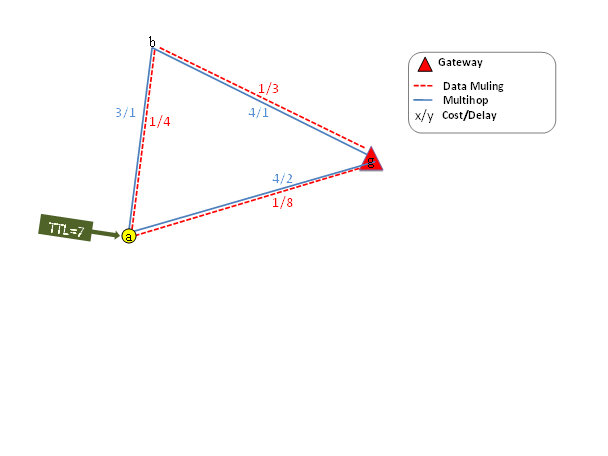

A node has arrived at intersection a carrying a message with remaining TTL value is equal to 7. The algorithm computes all possible paths from a to the gateway g with all strategy selection combinations, either data muling (DM) or multihop forwarding (MF). Assuming that a vehicle is available at every outgoing edge of intersection a, a greedy forwarding algorithm would only consider propagating over edge (a,g), since this is the edge on the shortest path. It would then detect that data muling would incur a higher delay than TTL allows and would have opted for multihop forwarding over (a,g), spending 4 transmissions. D-MinCost, on the other hand, will try to find the cheapest path that satisfies the delay requirement. It will consider all outgoing edges and will eventually choose to propagate over (a,b) using data muling and subsequently over (b,g) using data muling as well. This will incur a communication cost of 2 transmissions, less than D-Greedy, and a delay of 7, equal to the TTL value.